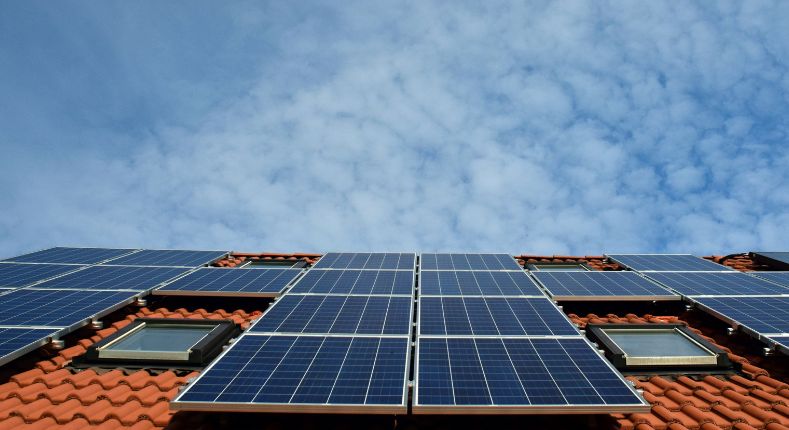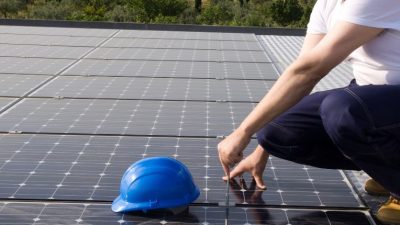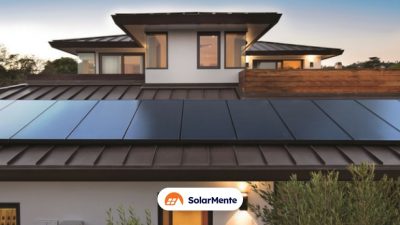In the search for sustainable and efficient solutions to the global energy problem, solar panels have positioned themselves as the undisputed protagonists. This article provides a detailed overview of solar panel material, from key components to environmental impact and future considerations.
What are Solar Panels?
Solar panels, also known as solar panels, are devices that convert sunlight into electricity. They are composed of photovoltaic cells, whose function is to capture the sun’s energy and transform it into usable energy for homes, businesses and even for powering electricity grids.
Key Components of Solar Panels
Photovoltaic cells are the essential component of solar panels. These cells are responsible for converting sunlight into electricity through the photovoltaic effect.
The most widely used material in the manufacture of photovoltaic cells is silicon, which comes in monocrystalline, polycrystalline and amorphous forms. Each type offers different balances between efficiency and cost, adapting to different needs and budgets.
Monocrystalline Silicon: Efficiency and Elegance
Monocrystalline silicon panels are highly efficient and aesthetically pleasing, with a uniform colour that makes them preferred for residential and commercial applications where appearance is a key consideration.
Polycrystalline Silicon: Balancing Cost and Efficiency
Although slightly less efficient than their monocrystalline counterparts, polycrystalline silicon plates offer an attractive middle ground in terms of cost and performance, making them a popular choice for many solar energy projects.
Amorphous Silicon: Flexibility and Adaptability
Amorphous silicon is characterised by its flexibility and is ideal for surfaces that cannot support the weight of traditional panels. Although its efficiency is lower, its ability to adapt to different applications makes it invaluable in certain contexts.
The Manufacturing Process of Solar Panels
The manufacturing process for solar panels is complex and meticulous, beginning with the purification of the silicon and culminating with the assembly of the cells into ready-to-install panels. This process requires not only technical precision, but also a commitment to quality and sustainability.
The solar industry is constantly evolving, looking for ways to make panels more efficient, cheaper and more environmentally friendly. Innovations in materials and manufacturing techniques are key to the future of solar energy.
Innovative and Emerging Materials
In the search for more efficient and sustainable solutions for solar energy capture, materials science has been central. Two of the most promising materials in this area are Cadmium Telluride (CdTe) and Copper Indium Diselenide (CIS/CIGS). These composites have attracted attention for their unique properties, which could outperform traditional materials on several fronts.
Cadmium Telluride (CdTe)
Cadmium telluride is a semiconductor that has emerged as a viable option for the manufacture of solar cells. This material offers a combination of properties that make it particularly attractive for this use:
- Light Absorption: One of the most significant advantages of CdTe is its high efficiency in absorbing sunlight. This means that very thin layers of the material can absorb light almost as efficiently as much thicker layers of other materials, such as silicon.
- Cost and Production: CdTe solar cells are less expensive to manufacture compared to silicon-based ones. This is partly because the production process is simpler and requires less energy, which also contributes to a lower environmental impact.
- Performance: CdTe solar cells have achieved efficiencies in the 22% range, making them competitive with silicon-based technologies. In addition, their performance has steadily improved, suggesting great potential for future increases in efficiency.
However, the use of cadmium, a toxic heavy metal, raises environmental and health concerns. Industry has responded by developing recycling and safe handling methods to mitigate these risks.
Copper Indium Diselenide (CIS/CIGS)
Copper Indium Diselenide (CIS) and its gallium-containing variant (CIGS) are other semiconductor materials that offer promising benefits for solar technology:
- Flexibility: One of the most notable features of CIS/CIGS-based solar cells is their flexibility. This opens up new applications in areas where rigid solar cells are not ideal, such as curved roofs, clothing, or portable devices.
- Efficiency: CIGS cells have demonstrated efficiencies rivalling silicon in laboratory environments, exceeding 23%. This high efficiency, combined with their flexibility, makes them particularly attractive for certain applications.
- Sustainability: Although the extraction of indium and gallium (rare elements) presents challenges, research efforts are focused on making CIS/CIGS production more sustainable and less dependent on scarce materials.
Researchers around the world are also exploring new materials and technologies, such as perovskites, that promise more efficient and less expensive solar panels. These advances could revolutionise solar energy, making it even more accessible and efficient.
Continuous improvement of materials and processes not only increases the efficiency of solar panels, but also reduces their environmental impact, contributing to a more sustainable solution to the global energy crisis.
Efficiency vs. Cost: Finding the Perfect Balance
When selecting solar panels, it is crucial to consider both efficiency and cost. Although more efficient options may have a higher initial price tag, they often offer greater long-term savings compared to cheaper but less efficient alternatives.
The choice of the right material for your solar panels also depends on the required adaptability and durability.
The Role of Recycling in Solar Panels
As the number of solar panels deployed increases, so does the need for effective recycling solutions. The industry is working on methods to efficiently recycle solar panel materials, minimising the environmental impact at the end of their useful life.
Despite the challenges, recycling solar panels represents a significant opportunity to improve their sustainability. By recovering and reusing materials, we can reduce the demand for virgin resources and reduce the carbon footprint of solar energy.
Solar panels are at the heart of the transition to cleaner and more sustainable energy. Through continuous innovation in materials and manufacturing processes, solar energy is set to play an even more crucial role in our energy matrix.
As we move forward, the key will be to balance efficiency, cost and sustainability, ensuring that solar energy is not only accessible to all, but also friendly to our planet.
At SolarMente, we are here to accompany you on every step of this exciting journey towards a greener, more economically sustainable future. Start making positive change now!














